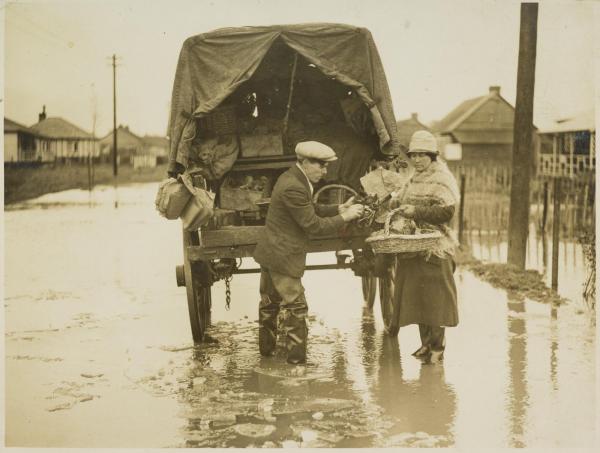After a thorough conservation survey of the MacKinnon collection, conservation teams at the National Galleries of Scotland (NGS) and National Library of Scotland (NLS) discovered that 30 of the cased daguerreotype photographs within the collection were suffering from glass disease and required treatment.

The daguerreotype, one of the earliest photographic processes, was produced on a highly polished silver plate. This plate was usually silver coated brass or copper. After the plate was cleaned it was then exposed to iodine fumes to produce a surface of silver iodine. This was then exposed in the camera and the latent image was formed when the plate was finally exposed to mercury vapour. The image was then “fixed” using a weak solution of hypo-sulphite of soda. The surface of the daguerreotype is extremely fragile and can be easily damaged by a fingerprint of even the softest of brushes so great care is required when handling the metal plate. As a result of this delicate surface the daguerreotype was then placed in a small case with a cover glass for safe handling and presentation.
Over time this cover glass can degrade, and glass disease is a relatively common occurrence with cased daguerreotypes. It is visible in the form of small droplets seen inside the glass. This deterioration is the moisture-driven chemical destabilization of the glass. This is often described as “weeping glass” and under more humid storage conditions, the hygroscopic alkaline crystals become semiliquid and the surface is sometimes described as feeling “greasy” to the touch. In a daguerreotype package, the formation of such deposits on the inner surface of the cover glass can result not just in an obscuring haze over the image, but in a much more serious outcome in which semiliquid material detaches from the inner surface of the cover glass and drops onto the daguerreotype image.
Once there, such material will affect the chemical state of the silver base and the silver–mercury image particles. Local image loss and the creation of corrosion product are likely to follow. Ultimately, it is this possibility of damage to the image that causes custodians of daguerreotype collections to worry about glass deterioration.
After dismantling the case itself the component parts are, an empty case, the daguerreotype plate (the photograph), usually a metal mount the purpose of which is to separate the delicate surface of the photograph from the cover glass and the cover glass itself to protect the delicate daguerreotypes surface.
If the glass shows traces of glass disease, then it needs to be carefully washed by immersion in deionised water changing the water regularly during the washing process. The glass is then thoroughly dried using a microfibre lint free cloth. All the remaining elements of the case, except the photograph are cleaned using a soft brush. The photograph, inner metal mount and cover glass are reassembled, and the edges sealed. This package is then rehoused in the original case. Any such interventive work should only be undertaken by a qualified professional.
When the treatments are completed then the photograph is stored in an environment with controlled temperature and humidity, and this should greatly reduce the possibility of any reoccurrence of glass disease. As part of our ongoing commitment to care for the collection the treated daguerreotypes will form part a yearly survey of the collection undertaken by NGS and NLS staff.
The MacKinnon Collection was acquired jointly with the National Library of Scotland with assistance from National Lottery Heritage Fund, Scottish Government and the Art Fund.



